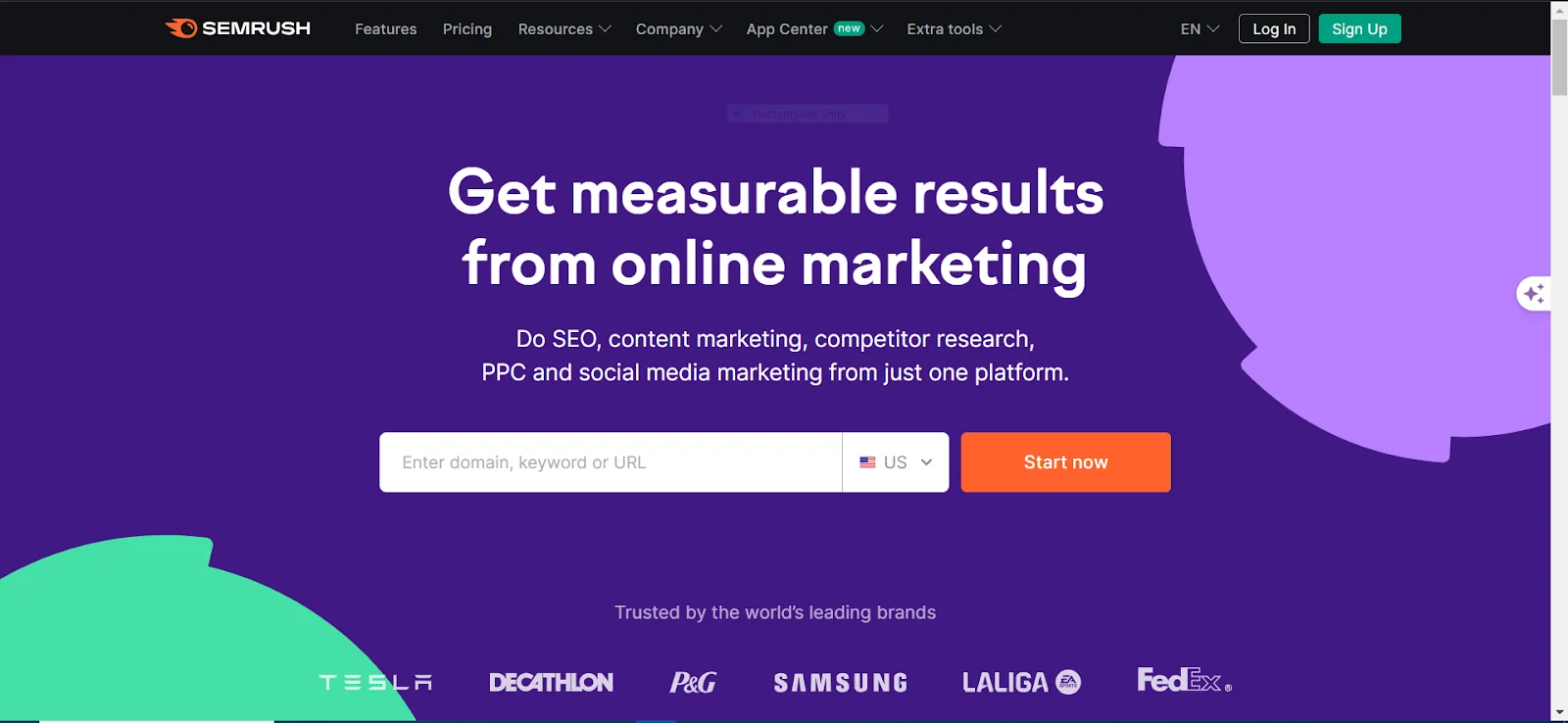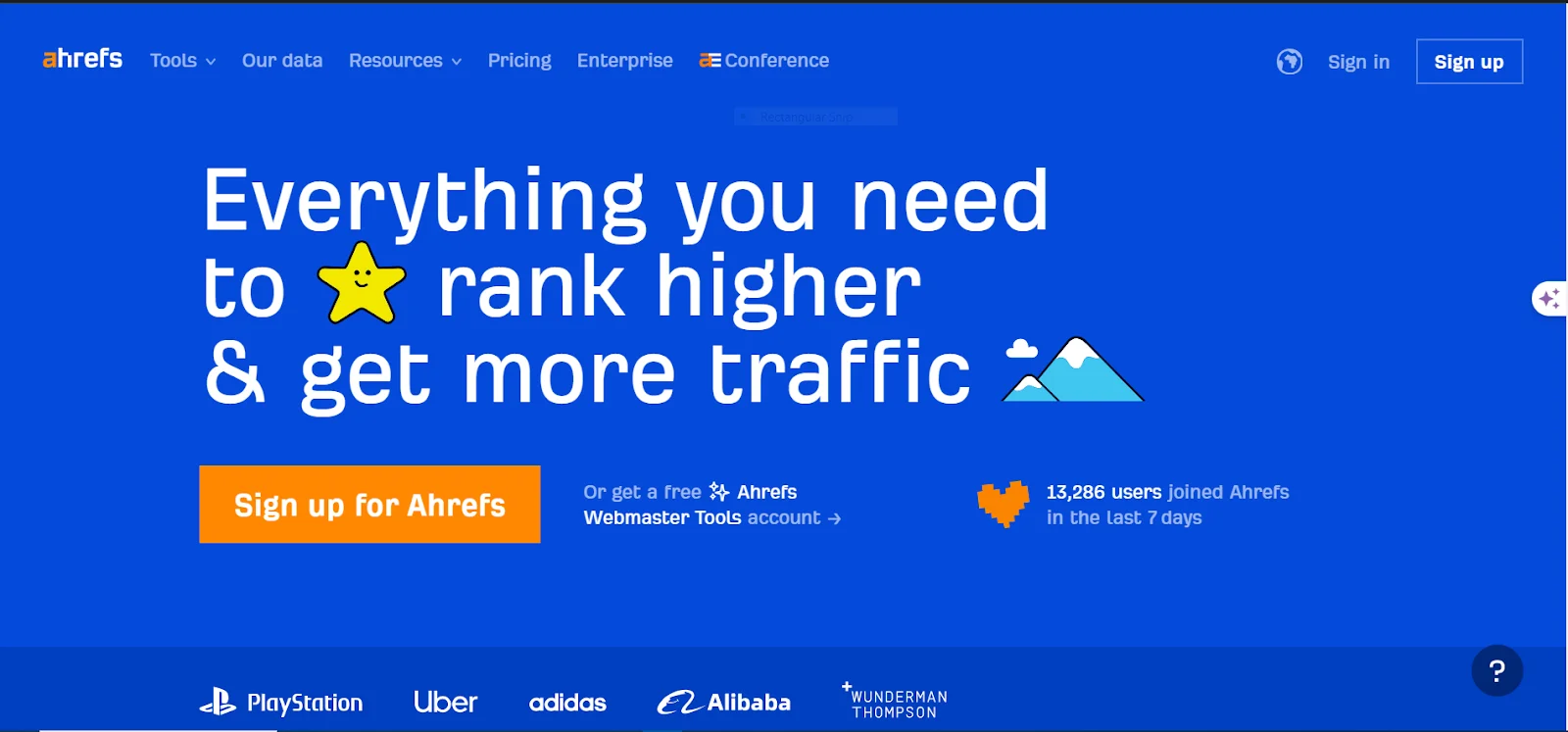Why is my Shopify Store not Showing up on Google?
Summer Nguyen | 08-25-2024

Getting your Shopify store noticed on Google is essential for attracting customers online. However, many Shopify store owners may have a question that “Why is my Shopify store not showing up on Google?” when they can’t search for their website on Google.
There could be many reasons such as indexing issues, lack of quality content, lack of backlinks, or technical SEO issues. Figuring out why this happens is key to fixing the problem and making your store get the attention it deserves.
In this article, we will explore common reasons why your Shopify store isn’t visible on Google and provide actionable steps to improve its visibility.
Let’s start!
6 Reasons Why Your Shopify Website is Not Showing up on Google
1. Google Sandbox
Even though Google hasn’t acknowledged or reported on the famed Google Sandbox, many marketers, SEO specialists, and website owners think it exists. For new and stale sites, the Google Sandbox is essentially “a box” or “quarantine.” This means that while Google judges if your store is harmful, spammy, or more importantly, contains no valuable content, you won’t receive any traffic for several months.
Solution:
But you can speed up the process by producing high quality content, updating and participating on social media, and above all, gaining high quality backlinks.
Here are some ways for you to escape the sandbox as soon as possible:
- Author four comprehensive and in-depth blog entries as a starting point, then one post every week.
- Create hyperlinks to profiles and accounts utilizing the guide: How to acquire backlinks quickly and correctly.
- Utilize Quuu Promote automated marketing since it sets off social signals. Trigger social signals by using social proof as well.

- Make daily tweaks to the website to promote frequent site crawls.
You are seriously losing out on organic, focused traffic if you are one of the many eCommerce businesses who do not use blogging as your main marketing platform.
A blog is a great way for businesses to get organic visitors. Email marketing, social media marketing, and advertisements are all a part of a larger marketing plan. Your blog is your passport to longevity.
2. Index Issues
This is the second reason why isn’t your Shopify store visible on Google?. You need to briefly understand what the concept of Sitemap is! A sitemap is the structure, the blueprint of your Shopify store, and its purpose is to help search engines, crawl, and index all of your pages.
Next, indexing issues are the most common reason why your Shopify store might not appear on Google, aside from being in the sandbox. To check if your site has been indexed, enter “site:{domain}” into the Google search bar, replacing “{domain}” with your Shopify store’s domain.
If you search for your business using “site:{domain}” and it doesn’t appear, the most likely reason is that you don’t have a Sitemap yet.
It’s excellent if your store is mentioned! Although your store has been indexed, it is still too fresh to begin keyword ranking. If not, keep reading to find out how to fix it.
Solution:
“Upload your Site map!”
To upload a sitemap in Shopify, simply access https://yourstore.myshopify.com/sitemap.xml to get your store’s automatically generated sitemap.
Then, log in to Google Search Console, add your store’s URL if not already added, verify ownership, go to the “Sitemaps” section, enter the path sitemap.xml, and click Submit.

It is noteworthy that in the event that you have uploaded a sitemap and have not received any penalties, please wait! Without a doubt, Google prefers to make sure that the content you supply is valuable.
However, it’s very rare for a Shopify store to be penalized.
3. Penalized
Facing a penalty is every site owner’s nightmare; in an instant, you could lose all rankings and have your site completely de-indexed.
This usually happens when you’ve started a bad link-building campaign, or when your content is really poor. Now, unless you’ve used some really dodgy practices, you’re quite unlikely to get fined for material on Shopify. Backlinks are typically the cause.
Solution:
Follow these steps and wait patiently:
- Visit Google Search Console and check for any issues that need to be resolved.
- Disavow any backlink that appears questionable.
- Create quality backlinks.
- Generate high-quality content.
This is going to be difficult; it can take Google 6 to 12 months to reconsider and determine whether the website is relevant enough to be indexed.
4. Highly Competitive
Your backlinks, content, and social media efforts might not be enough. Whether or not you have a wonderful product, the market is so competitive that Google abandons you in the nothingness.
Solution:
-
Begin blogging and focus on low-hanging fruit keywords. The goal is to build authority, which will help boost your ranking in the Search Engine Results Pages (SERPs).
-
Post engaging content on social media, rather than just products. Again, the idea is to create an audience that activates one of Google’s ranking factors: social signals combined with social evidence.
5. Lack of backlinks
You have a wonderful store, great products, and great blog posts, but you aren’t ranking? Unfortunately, you simply do not have any authority; if no one links to your store, Google feels it is not worthwhile.
Solution:
To address the lack of backlinks in Shopify, you can take the following ways:
- Create quality content: Write blogs, useful articles, and share knowledge related to your products. Engaging content will attract readers and other websites to link to you.
- Guest post on other websites: Write articles for blogs or websites related to your field and ask them to link back to your site.
- Leverage social media: Share your content on multiple social media platforms to drive traffic and create opportunities for other sites to link back to you.
- Reach out to related websites: Find related websites and ask them to link to your site. Provide reasons why your link is valuable to them.
- Build partnerships: Collaborate with other businesses to exchange links or participate in related communities and forums to create backlinks.
- Improve technical SEO: Ensure your website is optimized for on-page SEO and offers a good user experience to attract and retain visitors.
If you find it challenging to tackle improvements on your own, we are here to help. Our Shopify Development Services can significantly enhance your store’s performance and elevate your online presence.
Shopify Development Services
Start generating more revenue with your enhanced Shopify store built by us. No more stress over platform complexity.
Learn moreHow to Check the Ranking of Your Shopify Store
If you have done all these things above but do not find your Shopify store visible on Google, this may be due to your ranking having dropped so far. What you have to do now is improve your SEO ranking with some SEO-supporting tools.
To clarify, you are checking not only your store ranking but also the term ranking per page. You can measure your store’s overall authority, but this is based on the quality of backlinks and how well each keyword ranks.
It’s difficult to verify rankings without a tool, and Google doesn’t supply much when it comes to measuring each keyword. The good news is there are more tools that exist, however further analysis will need payment.
These are some tools you might need:
SEMrush
SEMrush is a robust tool that provides extensive features for tracking your store’s SEO performance. It provides keyword rank tracking, site audits, backlink analysis, and competitor analysis.

SheerSEO
SheerSEO is a cloud-based SEO tool that helps website owners and digital marketers make their online visibility and search engine rankings better. It offers features like rank tracking, backlink analysis, on-page SEO evaluation, competitor analysis, and site audits.

Ahrefs
Ahrefs is another robust SEO tool known for its detailed analysis and user-friendly interface. It includes features like rank tracking, site explorer, keyword research, and backlink analysis.

How to use these tools:
- Step 1: Create an account on each tool.
- Step 2: Enter your Shopify store’s URL.
- Step 3: Set up rank tracking for the keywords you want to monitor.
- Step 4: Use the data to optimize your SEO strategies and improve your store’s rankings.
Tips for Effective Rank Tracking:
- Regular Monitoring: Check your rankings regularly to spot trends and changes.
- Keyword Selection: Track a mix of short-tail and long-tail keywords relevant to your business.
- Analyze Trends: Look for patterns over time rather than focusing on daily fluctuations.
- Adjust Strategies: Use the data to adjust your SEO strategies and improve your rankings.
Using these strategies and tools allows you to effectively track your Shopify store’s ranking and make data-driven decisions to boost its search engine visibility.
How Long Does it Take to Rank My Shopify Store?
Like many others, after applying the tool, you may have Googled this a few times and found the answer: “It depends”. While exact timing varies due to many factors, our experience and data suggest it usually takes three to six months.
Similar to most new Shopify stores, you are more likely to have a newly registered domain, and newly registered domains are often placed in the “Google Sandbox”. To put it another way, the Google sandbox is similar to a quarantine in that it helps you identify whether your website is spam or not.
However, you can speed things up by creating more content and getting backlinks. Even if you can’t get backlinks from top sites or write guest posts, you can still build backlinks by creating profiles and accounts. Just follow this simple rule: provide value and stay active. It’s a straightforward and ethical approach!
FAQs
1. Can my Shopify store’s design affect its visibility on Google?
The answer is YES!
- Mobile-Friendliness: Be sure that your site is responsive and offers a great user experience on mobile devices, as Google prioritizes mobile-friendly sites.
- Navigation: A clear and user-friendly site structure helps Google crawl your site more effectively.
- Content Layout: Properly organized and accessible content can improve user experience and make your search engine rankings better.
2. How often should I review my Shopify store’s SEO performance?
- Monthly Reviews: Conduct monthly reviews to track performance metrics, analyze traffic trends, and identify any emerging issues.
- After Major Changes: Review SEO performance after making significant changes to your site, such as redesigns or content updates.
- Quarterly Audits: Perform comprehensive SEO audits quarterly to ensure ongoing optimization and address any issues that may arise.
3. How can I avoid getting my Shopify store de-indexed in the future?
- Monitor Performance: Regularly monitor your site’s performance using tools like Google Search Console and address any issues promptly.
- Stay Updated: Keep up-to-date with changes in Google’s algorithms and adjust your SEO strategies as needed.
Conclusion
Sometimes you may wonder “Why is my business not showing up on Google?” As previously said, poor content seldom results in Shopify merchants being punished or completely de-indexed. If your site gets penalized, it’s usually because of shady practices and spammy backlinks.
Ensuring your Shopify store appears on Google is crucial for driving traffic and sales.By addressing these issues through high-quality content, proper indexing, ethical link-building, and effective SEO practices, you can significantly improve your store’s ranking.
Remember, patience and consistent effort are key to seeing results. Utilize available SEO tools to monitor your progress and make data-driven adjustments to your strategy. With dedication, your Shopify store will gain the attention it deserves.








